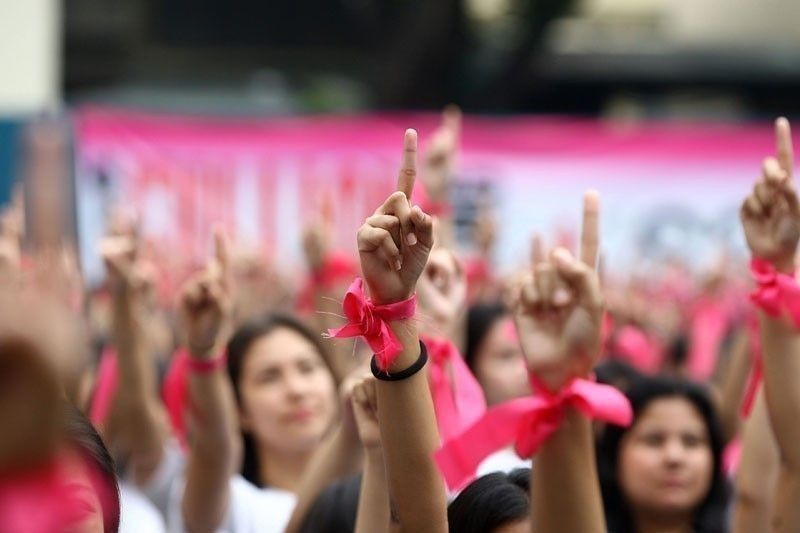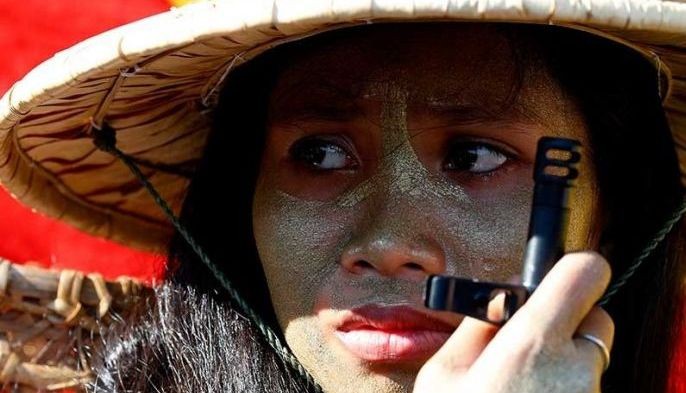Philippines first in women’s pay, female representation — regional report

MANILA, Philippines — Organizations and workplaces in the Philippines placed first in overall gender diversity, a new study of companies from ten Asian economies found.
This was discovered by nonprofit Community Business in its flagship study the Gender Diversity Benchmark for Asia (GDBA) which was released to reporters in a forum at the Thomson Reuters Manila office in Taguig on Monday.
The GDBA analyzed the representation of women in organizations in China, its Special Administrative Region Hong Kong, and India, Indonesia, Japan, Korea, Malaysia, the Philippines, Singapore and Taiwan and found that the Philippines led them all across the board despite a limited sample size.
Representatives of Community Business said that the study integrated data from a partnership with global advisory firm Willis Towers Watson, who conducted surveys of 4.8 million employees in more than 3,600 companies.
The study defined the representation of women as based on job level, industry and function and age, while its methodology employed a company-weighted approach, reported the median, and focused solely on full-time corporate positions. Conclusions on the pay gap were also drawn from total compensation for men and women.
'Bright spot but still not perfect'
The study found that women make up 56% of the total workforce in the Philippines, good for second in Asia.
In terms of representation in senior level or leadership positions, women in the Philippines also ranked first in Asia while still being significantly unrepresented compared to men at 33%. Next were Malaysia, which had 26.7% of senior posts held by women, and Hong Kong at 24.7%.
Despite the glowing results of the Philippines, the country's inclusion of women is clearly not without its lapses.
“The Philippines is a bright spot in Asia, but it’s still not perfect,” Tina Arcilla, head of the Diversity & Inclusion Asia Network and a member of Community Business Hong Kong, said.
For instance, women still make up no more than a third of leadership posts, including country heads and senior executives. The Philippines still led in this category with 33% of women in senior roles, but the numbers are far from encouraging.
Although the Philippines led the countries in the study in terms of pay gap between men and women, the gap was still generally present among all countries studied. Across the ten markets surveyed, women were seen to be paid less than men by at least ten percent, which equated to women being paid 90 cents for ever dollar a man earns.
According to the Gender Diversity Benchmark for Asia, women need to work up to an additional 98 days a year to earn as much as men do.
Asked what accounts for gender imbalance in fields of expertise such as STEM, Arcilla says there is a bias towards how even children are raised, which is why there is a resulting bias, too, towards certain industries. @PhilstarNews
— Franco Luna (@FrancoOvrboard) March 2, 2020
Interestingly, the GDBA noted that women’s representation consistently declined with increasing age. Women who were in their early 20s actually outnumbered men in the workforce. Past age 55, they make up less than 40%.
Thomson Reuters, who co-funded the study, linked this to "cultural biases that hinder women's career advancement, such as playing a bigger role in domestic duties, which coincides with a later phase in life and the opportunity to take on more senior roles at the workplace."
"While the Philippines continues to rank highly across the three metrics considered by the study, gender imbalance persists in terms of organizational functions. Women are heavily represented in Human Resources (71%) and Finance (69%) but outnumbered in IT (28%)," Thomson Reuters said in a release.
Community Business was careful to point out that while companies in the Philippines made up less than ten percent of the aggregated data employed in the study, the data on each company was still a fairly representative sample size.
Moving forward
The study was released to the media ahead of International Women’s Day 2020 on March 8.
Asked by reporters what the next move for pushing for further equity in the workplace Marla Garin-Alvarez, Diversity & Inclusion Lead at Thomson Reuters highlighted the need for branching out.
"Looking at the new arenas where we need to make our presence felt," she said. "Women need to be more adept at technology in order to lead in that space, [for example.]"
'Political empowerment gap'
The World Economic Forum in a separate 2020 study noted that the political empowerment gap for women grew wider as the Philippines dropped from 13th to 28th among 153 countries in that regard. This was linked to the lack of women appointees in Duterte’s cabinet.
Although Grant Thornton International’s 2020 Women in Business report placed the Philippines first out of 32 countries after it was found that 43% of Filipino women executives held senior management positions, the World Economic Forum in a separate study noted that the political empowerment gap for women grew wider.
Alvarez said that such expansion for women had to be done while supporting each other in order for generations of women leaders to pave the way for the next ones and providing opportunities.
Arcilla says this ties into the idea of intersectionality. She says it’s perhaps good to engage a diverse representation of women so as not to be exclusionary to different types of women. @PhilstarNews
— Franco Luna (@FrancoOvrboard) March 2, 2020
"If you get to a senior enough level, that you are able to call the shots and make decisions, do so and use your leadership position to make things happen for women," Alvarez said.
Asked about the role of men in achieving parity for women in the workplace, Arcilla says conversations and programs should highlight that gender equity affects everyone and not just women.
“We need to make sure it’s communicated as everyone’s fight,” she said.
- Latest
- Trending

































